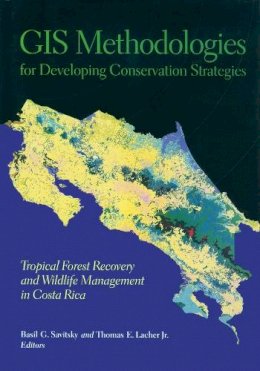
Stock image for illustration purposes only - book cover, edition or condition may vary.
GIS Methodologies for Developing Conservation Strategies: Tropical Forest Recovery and Willdlife Management in Costa Rica
Basil Savitsky (Ed.)
€ 119.41
FREE Delivery in Ireland
Description for GIS Methodologies for Developing Conservation Strategies: Tropical Forest Recovery and Willdlife Management in Costa Rica
Hardback. Focusing on the biodiversity of Costa Rica, the contributors to this book demonstrate the use of geographic information systems (GIS) to enhance conservation efforts. They give an overview of the spatial nature of conservation and management and the current status of digital mapping in Costa Rica. Editor(s): Savitsky, Basil G.; Lacher, Jr. Thomas E.; Lacher, T.E. Series: Biology and Resource Management Series. Num Pages: 278 pages, 73 illus, 28 photos. BIC Classification: 1KLCR; RGW; RNF; RNK. Category: (P) Professional & Vocational. Dimension: 254 x 178 x 24. Weight in Grams: 953.
Tropical habitats may contain more than a third of the world's plant and animal species; Costa Rica alone is home to one of the highest levels of biodiversity per unit area in the world, and stands at center stage in worldwide conservation efforts. Within such regions, the use of state-of-the-art digital mapping technologies-sophisticated techniques that are relatively inexpensive and accessible-represents the future of conservation planning and policy. These methods, which employ satellites to obtain visual data on landscapes, allow environmental scientists to monitor encroachment on indigenous territories, trace park boundaries through unmarked wilderness, and identify wildlife habitats in regions where humans have limited access. Focusing on the rich biodiversity of Costa Rica, the contributors demonstrate the use of geographic information systems (GIS) to enhance conservation efforts. They give an overview of the spatial nature of conservation and management and the current status of digital mapping in Costa Rica; a review of the basic principles behind digital mapping technologies; a series of case studies using these technologies at a variety of scales and for a range of conservation and management activities; and the results of the Costa Rican gap analysis project. GIS Methodologies for Developing Conservation Strategies provides powerful tools for those involved in decision-making about the natural environment, particularly in developing nations like Costa Rica where such technologies have not yet been widely adopted. For specialists in such areas as geography, conservation biology, and wildlife and natural resource management, the combination of conceptual background and case examples make the book a crucial addition to the literature.
Product Details
Format
Hardback
Publication date
1998
Publisher
Columbia University Press United States
Number of pages
278
Condition
New
Series
Biology and Resource Management Series
Number of Pages
278
Place of Publication
New York, United States
ISBN
9780231100267
SKU
V9780231100267
Shipping Time
Usually ships in 15 to 20 working days
Ref
99-15
About Basil Savitsky (Ed.)
Basil G. Savitsky is assistant professor in the Graduate School of Geography and coordinator of the M.A. program in GIS and International Development at Clark University.Thomas E. Lacher Jr. is professor and Caesar Kleberg Chair in Wildlife Ecology in the Department of Wildlife and Fisheries Sciences at Texas A & M University. Formerly the director of the Archbold Tropical Research Center at Clemson University (1989-1996), he is the coauthor, with R. J. Kendall, of Wildlife Toxicology and Population Modeling: Integrated Studies of Agroecosystems.
Reviews for GIS Methodologies for Developing Conservation Strategies: Tropical Forest Recovery and Willdlife Management in Costa Rica
